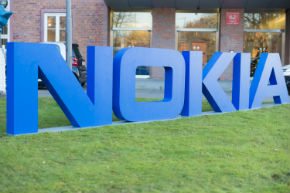The rumors about these two companies coming together have been heard around industry conferences and water coolers for years now. It seems there’s a good reason for that. As shared in this morning’s press conference, they aren’t rumors any longer, which supports the old words of wisdom that if you hear a rumor often enough there is likely some level of truth in it.
More about the facts and figures for this deal:
- The companies have signed a memorandum of understanding for an all-share transaction.
- Nokia will offer in France and the United States, .55 Nokia share for every Alcatel-Lucent share with a total value of $16.5 billion based on $8.26 closing share price on April 13.
- Both companies’ boards of directors have approved the terms of the proposed transaction.
- The deal is expected to close as soon as the first half of 2016.
- Closing is subject to approval by Nokia shareholders, works council consultations and regulatory approvals.
- Rajeev Suri continues as CEO of the new company.
- Risto Siilasmaa continues as chairman of the new company.
- The new board of directors will have 9 or 10 members with three to come from Alcatel-Lucent.
- Headquarters remains in Finland with strategic business and research and development locations in France, Germany, China and the U.S.
Risto Siilasmaa spoke first and started by sharing that the discussions had begun between the two companies in 2013. At the time, Nokia had just divested its handset business and was looking to expand beyond the mobile broadband focus provided through the Nokia Networks team. Alcatel-Lucent brings additional capabilities in fixed line, IP routing and analytics functionality. Multiple options were considered at that time for the best fit and the goal of the decision was about expansion of technology scope, not business scale.
Let’s take a look at some combined statistics:
- Year-end 2014 Alcatel-Lucent headcount – 52,600
- Year-end 2014 Nokia headcount – 61,656
- Year-end 2014 Alcatel-Lucent revenue spread: North America – 44%, Asia Pacific – 20%, Europe – 23%, Rest of World – 13%
- Year-end 2014 Nokia revenue spread: North America – 15%, Asia Pacific – 28%, Europe – 30%, Rest of World – 27%
- Combined R&D employees in new company – 40,000
- Combined R&D spend in new company – $5 billion
- Combined services employees in new company – 42,000
The Bells Labs brand and Nokia’s Futureworks technology vision efforts are good platforms to achieve their technology goals. The focus of the combined company is on the next wave of technological change specifically calling out the “Internet of Things” and the cloud.
Of course you can’t ignore the tough topic – cost savings. The current projections are as follows:
- $956 million operating cost synergies through reduction in overlapping services, headcount in regional and central functions by the end of 2019.
- $212 million reduction in interest expense through reduction in overhead costs such as real estate, manufacturing, supply chain, IT, and general and administrative expense costs by 2017.
Clearly there will be job and work location impacts. During the Q&A session, the first questions out of the audience were along these lines. These are two huge equals basically creating an organization of even huger proportions. It would be impossible to assume there are not substantial impacts in these areas.
Subscribe now to get the daily newsletter from RCR Wireless News
The geographic implications of this combined company are positive of course. Nokia has very publicly struggled in the North American market and Alcatel-Lucent equally in Europe. Together these gaps are alleviated and Nokia’s addressable market grows by 50%.
For all of the good in this announcement, I have some concerns. The company will be huge, but can it be nimble, forward-looking and competitive? Nokia is rescinding on things it said previously weren’t of strategic importance to its core business, such as fixed-line infrastructure and enterprise products. OK, I understand strategies morph over time, but it seems a bit back and forth to me. Lastly, with a one-year run up to a new company and obvious downsizing in the future, how will it keep organizational eyes on the ball and not worry about future employment or work location? Will the competition gain short-term advantages during this time?
Nokia also announced today a review of its Here business to determine if it is a strategic fit for the new company going forward. A year of groundwork in 2015 will set the stage for the new company in 2016.
Alcatel-Lucent CEO Michel Combes reflected on his relationship with Nokia CEO Rajeev Suri over the years as follows: “First he was a supplier, then he was a nightmare of a competitor and now he is a partner.” One thing you can be certain of in this industry is change will always be a constant and looking for new ways to stay relevant will always be a challenge.
I wish these companies success in what will likely be a difficult road over the next year or so. They’ve both come so far against the industry predictions of their demise, so hopefully this takes them to the next level.
Like what you read? Follow me on twitter!
Claudia Bacco, Managing Director – EMEA for RCR Wireless News, has spent her entire career in telecom, IT and security. Having experience as an operator, software and hardware vendor and as a well-known industry analyst, she has many opinions on the market. She’ll be sharing those opinions along with ongoing trend analysis for RCR Wireless News.

